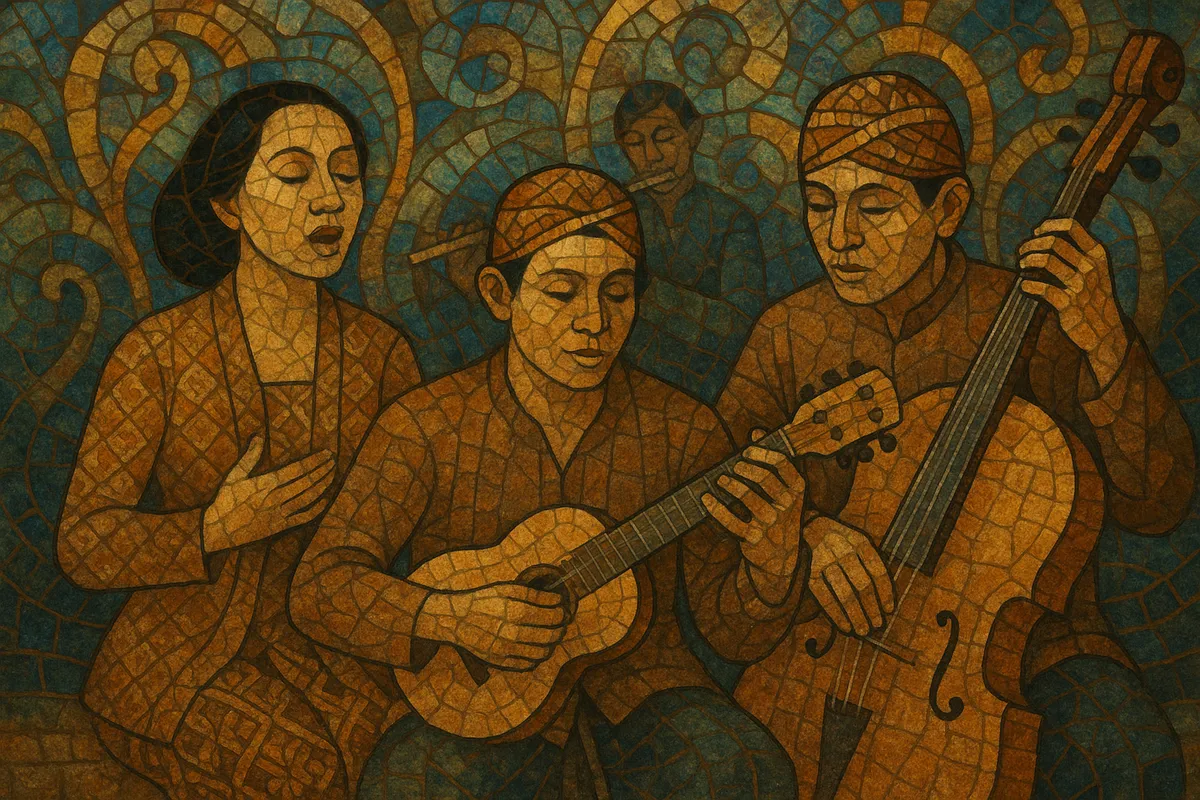Langgam Jawa is a Javanese-language offshoot of the Indonesian keroncong tradition that integrates Javanese melodic aesthetics (cengkok, wiled) and gamelan-derived scales (sléndro and pélog) into a Western-instrument keroncong ensemble.
Typically performed by voice with cak and cuk (ukulele family) providing off-beat propulsion, pizzicato cello outlining bass figures, guitar, flute, violin, and double bass, the style retains keroncong’s lilting 4/4 groove while shaping melodies around Javanese modal contours and poetic prosody. Vocal delivery is supple and ornamented, often alternating between gentle rubato passages and metrically steady refrains.
Lyrically, Langgam Jawa favors refined Javanese (krama) or colloquial (ngoko) registers, addressing love, longing, nature, and social reflection with a nostalgic, tender tone. The result is a graceful hybrid: the intimacy and syncopation of keroncong colored by the modal flavor and expressive inflections of Javanese karawitan.
Langgam Jawa emerged in Central Java—especially Surakarta (Solo) and Yogyakarta—during the 1950s as Javanese musicians adapted keroncong’s ensemble and rhythm to Javanese melodic ideals and language. Radio orchestras (notably in Surakarta) popularized the sound, encouraging new compositions that set Javanese lyrics to keroncong frameworks while drawing pitch and phrase ideas from Javanese gamelan modes (sléndro/pélog) and tembang traditions.
Through the 1960s and 1970s, notable singers and composer-arrangers refined the idiom. Recordings and radio broadcasts cemented characteristic features: an optional free-time vocal prelude (bawa) leading into a steady 4/4 keroncong groove; an A–A–B–A or verse–refrain design with a contrasting ngelik (middle) section; and ornamented vocal lines shaped by cengkok and gregel.
While keroncong itself diversified, Langgam Jawa remained a reference point for Javanese-language popular music. Its modal flavor and instrumentation heavily influenced the rise of campursari (which mixes gamelan and modern/keroncong setups) and informed subsequent Javanese pop currents. Contemporary singers and ensembles continue to reinterpret classics, keeping the style’s tender, nostalgic expressivity alive in concerts, festivals, and media.


